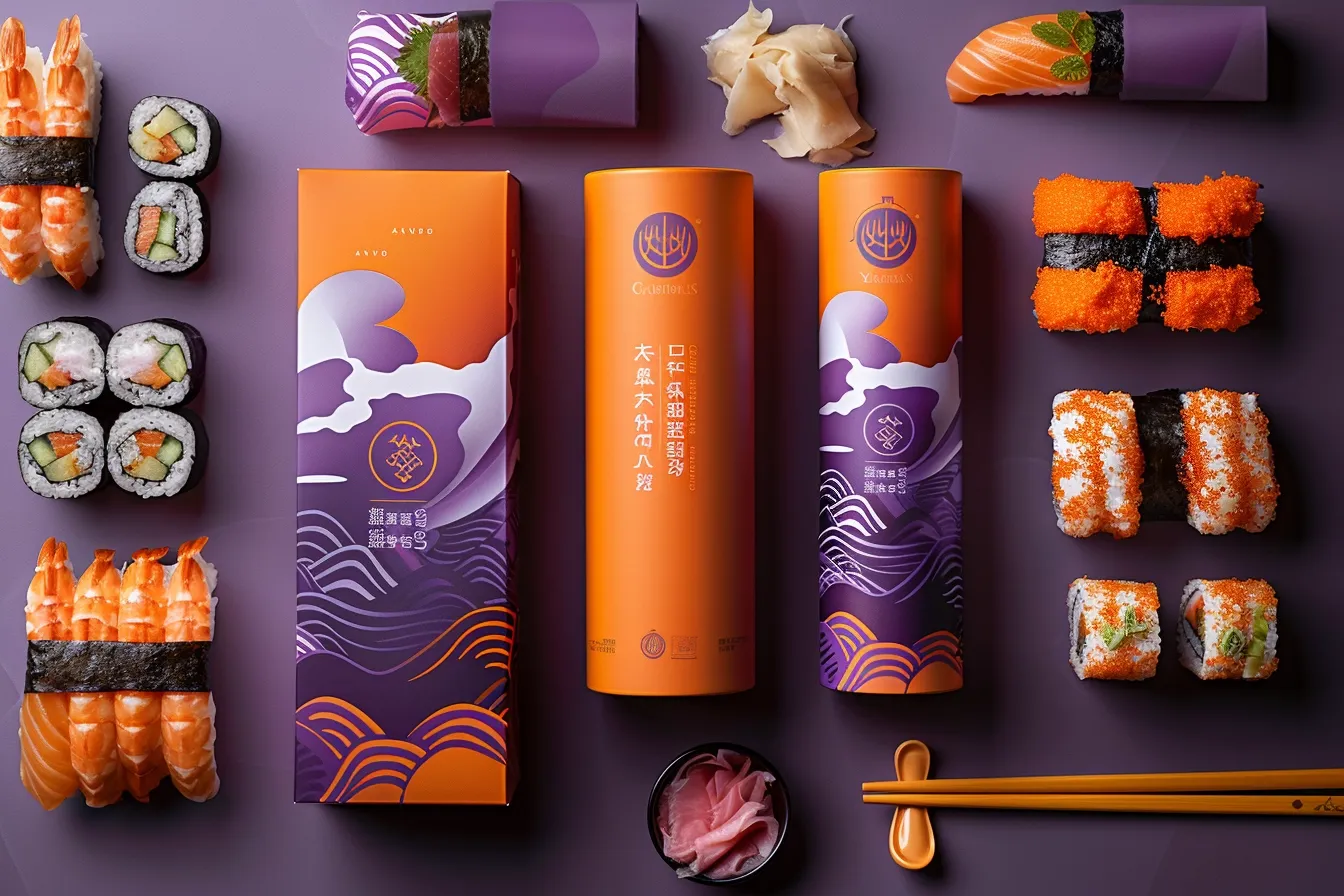In the digital era, the average consumer is exposed to 6,000 to 10,000 commercials daily, making it increasingly difficult to capture attention. How can certain businesses stand out and maintain attention in a crowded marketing landscape, leaving a lasting impact on consumers? The solution is found not only in the product’s quality or the effectiveness of the advertisement but in a profound comprehension of human psychology.
Branding is fundamentally about molding perceptions and impacting choices. It is a style of art that manipulates human emotion and reasoning, combining experiences that emotionally resonate with individuals. Memorable companies effectively engage their audience by appealing to both emotions and rationality, utilizing psychological concepts to evoke emotional reactions and influence customer behavior.

Utilizing color strategically to trigger particular emotions and mastering the art of storytelling to establish a personal connection with the audience are psychological techniques that may enhance a brand’s reputation on a global level. Exploring these ideas will uncover the strategies behind highly successful branding initiatives, showcasing real-life instances of companies that have mastered the skill of psychological influence. These enterprises have not only achieved rapid prosperity but have also cemented enduring reputations, weaving themselves seamlessly into the societal tapestry.
Explore the factors that evoke emotion in branding:
Given the current state of consumer skepticism and discernment, comprehending the psychological foundations of successful branding is not only beneficial but essential. Accompany the journey as seven psychological branding strategies are dissected, revealing the blueprint for creating lasting impressions and fostering unwavering customer allegiance. These insights serve as a guiding light for individuals and businesses striving to elevate their brand’s visibility and strengthen its connection with the audience.
1. Color Psychology’s Influence on Branding
Color psychology is crucial in branding since it impacts customer perceptions and actions on a subconscious level. Strategically choosing colors may elicit certain emotional reactions, convey brand principles, and greatly influence customer decision-making. The influence of color psychology will be explored here by providing examples from several renowned businesses.
Red Symbolizes Excitement and Energy
Red is a potent hue representing enthusiasm, passion, and urgency. It is frequently utilized by companies to attract attention, enhance hunger, or evoke a feeling of urgency. Coca-Cola’s utilization of the color red is emblematic, contributing to the establishment of a brand identity that is dynamic and vibrant. Netflix uses the color red in its logo and user interface to create excitement and attract viewers to its vibrant entertainment platform. Fast-food companies such as McDonald’s and KFC use the color red to increase hunger and suggest fast service.
Read more about the use of red in branding
Blue Represents Trust and Dependability
Blue represents trustworthiness, security, and reliability. It is a popular choice for technological and financial firms looking to establish trust with their customers. Facebook, Twitter, and LinkedIn all utilize various colors of blue to convey their image as trustworthy platforms for communication and networking. Chase and American Express, along with other banks and financial organizations, utilize the color blue to represent security and professionalism and to instill confidence in clients over the protection of their assets.
Know more about the use of blue:

Green Symbolizes Health and Growth
Green is linked with health, growth, and peace, making it a favored option for companies aiming to align with nature, organic goods, or environmental awareness. Whole Foods Market incorporates the color green in their logo to highlight its dedication to natural and organic food goods. The hue communicates themes of health, freshness, and sustainability. John Deere utilizes a unique shade of green to link its brand with growth and agriculture, strengthening its recognition among customers.
Yellow Represents Optimism and Clarity
Yellow, a hue commonly linked with positivity, lucidity, and warmth, is utilized by companies to elicit emotions of joy and warmth. Snapchat’s use of a vibrant yellow color for its logo helps the company to be distinctive, embodying its playful and young values. IKEA utilizes a combination of yellow and blue to establish a welcoming and approachable brand identity, encouraging customers to explore a range of home decor products that provide both affordability and style.
Explore the significance of yellow in branding:
Purple Symbolizes Luxury and Creativity
Purple is commonly linked with elegance, inventiveness, and refinement. It is selected by firms aiming to distinguish themselves and communicate a feeling of exclusivity or exceptional quality. Hallmark incorporates the color purple in their logo to convey a sense of originality and meticulousness, which are crucial attributes for a business focused on individual expression through cards and presents. Cadbury employs a deep purple color to set out its chocolate goods as luxurious and premium delicacies.
Gain deeper insights into the role that purple plays in branding:

Orange Represents Friendliness and Confidence
Orange is a hue that blends the vitality of red with the happiness of yellow, creating a welcoming, confident, and joyful perception. Nickelodeon and similar brands utilize the color orange in their logos and branding to convey a sense of enjoyment, innovation, and friendliness, appealing to a youthful demographic with a lively and whimsical image. Home Depot’s choice of orange color evokes a feeling of assurance and trustworthiness, indicating a reliable destination for all your home renovation requirements.
The examples demonstrate how businesses deliberately utilize color to impact customer perception and behavior. Brands may select colors that match their identity and values by considering the psychological effects of different colors. This helps create a visual language that resonates with the emotions and aspirations of their target audience. Color psychology may help companies create stronger relationships with consumers, leading to improved brand awareness and loyalty.
Gain greater insights into the use of the color orange:
2. Reciprocity Principle in Branding
Reciprocity is a basic human inclination that is essential in social relationships. Reciprocity is the principle that when someone does something for us, we feel obligated to do something in return. Utilizing this idea in branding and marketing can result in strong customer engagement and loyalty. Brands may cultivate a favorable connection with consumers by offering unexpected value, which can lead to repeat business and word-of-mouth advertising. We will examine how different businesses have successfully utilized the idea of reciprocity to improve their connections with consumers.

Sephora: Rewarding Loyalty
The Beauty Insider program at Sephora exemplifies the reciprocity principle in practice. Sephora provides its clients with complimentary birthday presents, unique prizes, and exclusive event access as a gesture of goodwill, without expecting an immediate purchase in return. This act of kindness motivates customers to reciprocate by increasing their purchases and becoming brand ambassadors, spreading their pleasant experiences to others.
Dropbox: Reciprocal Advantages from Referrals
Dropbox’s referral scheme cleverly utilizes the concept of reciprocity by providing additional storage space to both the referrer and the recommended. This method encourages users to share Dropbox with others and fosters a feeling of mutual gain and gratitude. Dropbox expanded its user base dramatically without using conventional advertising methods, instead using the innate human tendency to reward acts of charity.
Costco: Sampling Promotes Sales
Costco is famous for its complimentary samples, a tactic that exemplifies the idea of reciprocity. Costco gives instant value to its consumers by delivering complimentary samples of different items, which frequently leads to customers feeling compelled to buy the tested product as a kind of reciprocity. This method not only increases sales but also improves the shopping experience, leading to higher client retention.
Google: Prioritizing Value using Google Docs
Google Docs provides a wide range of productivity tools at no cost. This thoughtful gesture fosters trust and appreciation among consumers, increasing the likelihood of them exploring and adopting other premium services provided by Google. Google creates a devoted user base by offering substantial value at the beginning, which triggers the principle of reciprocity.

Starbucks: Customized Deals using the Starbucks App
Starbucks utilizes its mobile application to provide customized promotions and incentives to its clientele, such as complimentary beverages on their birthdays or unexpected bonuses. Providing individualized care to consumers helps them feel esteemed and acknowledged, therefore enhancing their inclination to select Starbucks over rival brands. Providing a customized and complimentary gift boosts client loyalty by prompting a desire to return the nice gesture.
TOMS Shoes: One-for-One Business Model
TOMS Shoes uses a distinctive reciprocity method with its “One for One” concept, in which a pair of shoes is provided to a kid in need for every pair purchased. Customers participate in a reciprocal exchange of goodwill by purchasing from this model, directly supporting a charity organization. Engaging in a sense of contributing to a larger cause motivates customers to keep backing TOMS, demonstrating a wider scope of reciprocity beyond direct brand-consumer engagement.
The examples demonstrate how the idea of reciprocity may effectively develop strong, positive relationships between businesses and their customers. Brands may elicit a natural human desire to reciprocate behaviors by offering value through incentives, services, or goodwill gestures. When implemented sincerely and innovatively, this approach may convert consumer interactions into enduring connections, enhancing loyalty, and cultivating a feeling of community centered on a business.
3. Scarcity Principle
The scarcity principle relies on the basic human psychology that products with limited availability increase in desirability. This idea can induce a feeling of urgency in consumers, prompting them to swiftly obtain a scarce item before it is no longer available. Supreme is a company that excels in utilizing scarcity, noted for its exclusive releases and partnerships with renowned companies. Supreme releases limited amounts of new items and does not replenish them after they are sold out. This approach generates instant sales and fosters a devoted following since possessing Supreme clothes becomes a mark of status among enthusiasts.

Apple utilizes a comparable strategy for its product debuts. Apple strategically controls pre-order timelines and launch dates to generate excitement for its new products, establishing them as highly desirable. Consumers are motivated to queue for hours at Apple stores because of the anticipation and restricted supply, resulting in rapid sell-outs of new launches. This method enhances sales and strengthens Apple’s brand image as a pioneer in innovation and attractiveness.
4. The Impact of Storytelling
Storytelling is a potent technique in branding, capable of creating strong emotional bonds with people. It changes products from simple things into representations of values, ambitions, and experiences. Nike is a company known for its exceptional narrative, frequently showcasing athletes who triumph over challenges to reach success. Nike’s “Just Do It” campaign is influential as it motivates individuals to surpass their boundaries, irrespective of their physical condition, rather than only promoting sportswear. Nike items are elevated to symbols of tenacity, passion, and personal success via storytelling.
Airbnb utilizes narrative to change the perception of staying in an unfamiliar person’s residence from possible danger to a distinctive vacation opportunity. Airbnb showcases the personal relationships and unique experiences made possible through its service by sharing tales of hosts and tourists worldwide. By adopting a narrative approach, Airbnb addresses safety and privacy issues, presenting itself not only as a place to stay but also as a portal to new experiences and social interactions.
The examples illustrate the power of storytelling in eliciting powerful emotional reactions, prompting customers to identify with a brand’s principles and objectives. Brands can establish deeper connections with their audience by sharing impactful tales that highlight their beliefs and influence, ultimately fostering long-term loyalty and support.
Have a comprehensive understanding of how storytelling can be conveyed through aesthetics:

5. Bandwagon Effect
The bandwagon effect is a psychological phenomenon in which individuals engage in certain behaviors mostly due to the influence of others, disregarding their own opinions which may be disregarded or suppressed. This phenomenon is common in marketing since the perceived popularity of a product can influence sales. Apple effectively employs the bandwagon effect in its marketing by highlighting a sizable and enthusiastic customer base. Apple devices are prominently displayed in public areas like cafés and businesses, as well as in media like movies and television shows, suggesting widespread usage. This notion motivates people to buy Apple products to avoid being excluded from the trend, strengthening the brand’s market leadership and customer loyalty.
Social proof is seen in Tesla’s marketing of its electric automobiles. Tesla leverages the bandwagon effect by capitalizing on the vocal endorsement of delighted customers and high-profile endorsers, rather than traditional advertising. Observing celebrities or influencers driving a Tesla influences others to perceive the car as desirable and environmentally conscientious, prompting more others to follow suit and join the “Tesla Bandwagon.”
6. Anchoring Effect
Anchoring is the human inclination to place excessive reliance on the initial piece of information presented (the “anchor”) while making decisions. The initial pricing or value proposition in branding and marketing may greatly impact consumers’ impression of a product’s value and their buying behavior. Amazon strategically employs anchoring during its Prime Day promotions by promoting substantial discounts on popular products as time-limited deals. These promotions establish a psychological reference point for consumers, enhancing the appeal of the reduced costs in comparison to the initial price. This approach promotes instant purchases and boosts the perceived worth of Amazon’s Prime subscription by emphasizing the idea of unique advantages and discounts.
The luxury apparel sector sometimes uses anchoring by pricing items at premium levels to create a sense of luxury and exclusivity. Brands such as Louis Vuitton and Chanel set their items’ worth at a high level, which buyers see as a sign of quality and prestige. Despite periodic discounts, the high original pricing acts as an anchor, making each price drop seem more meaningful and appealing to customers.

7. Contrast Principle
The contrast principle emphasizes how our perceptions are influenced by contrasting various possibilities. It is a potent strategy in branding and marketing to showcase a product beside inferior alternatives or in before-and-after scenarios, since it may significantly impact consumer decisions. Weight Watchers effectively demonstrates this idea by sharing the transformation tales of its members. Before-and-after pictures vividly demonstrate the program’s efficacy and motivate future consumers to envision obtaining comparable outcomes. This mismatch between visuals and emotions inspires action by appealing to the desire for enhancement and the idea that such changes are achievable.
Apple consistently offers clear examples of product upgrades in the technology industry through its presentations. Apple showcases the improvements in performance, design, and functionality of the current iPhone or MacBook models compared to their predecessors. This difference highlights the importance of updating, even if the prior version still fulfills fundamental requirements. Customers are influenced by both the new product’s advantages and the significant enhancements over their present product, which makes the new purchase appear more essential.
Utilizing psychological concepts in branding involves generating real connections and experiences that resonate with the audience, rather than simply controlling customer behavior.
Each principle connects with basic elements of human psychology, affecting perception, motivation, and action in nuanced yet significant ways. By strategically incorporating these components into their branding and marketing strategies, organizations may capture attention in a competitive market and cultivate loyalty and advocacy among their clientele.

The real-world examples demonstrate the efficacy of these tactics in several areas, such as technology, fashion, fast food, and personal fitness. These businesses have not only marketed items; they have crafted captivating stories and interactions that connect with consumers on an emotional level, transforming them into devoted supporters and advocates.
Delve deeper into the influence of emotions:
In the current digital era, with consumers being well aware and critical, establishing a psychological connection is extremely crucial. Brands that excel in this task are those who grasp the significance of surpassing consumer expectations by providing experiences that inspire, motivate, and resonate, not simply products.



